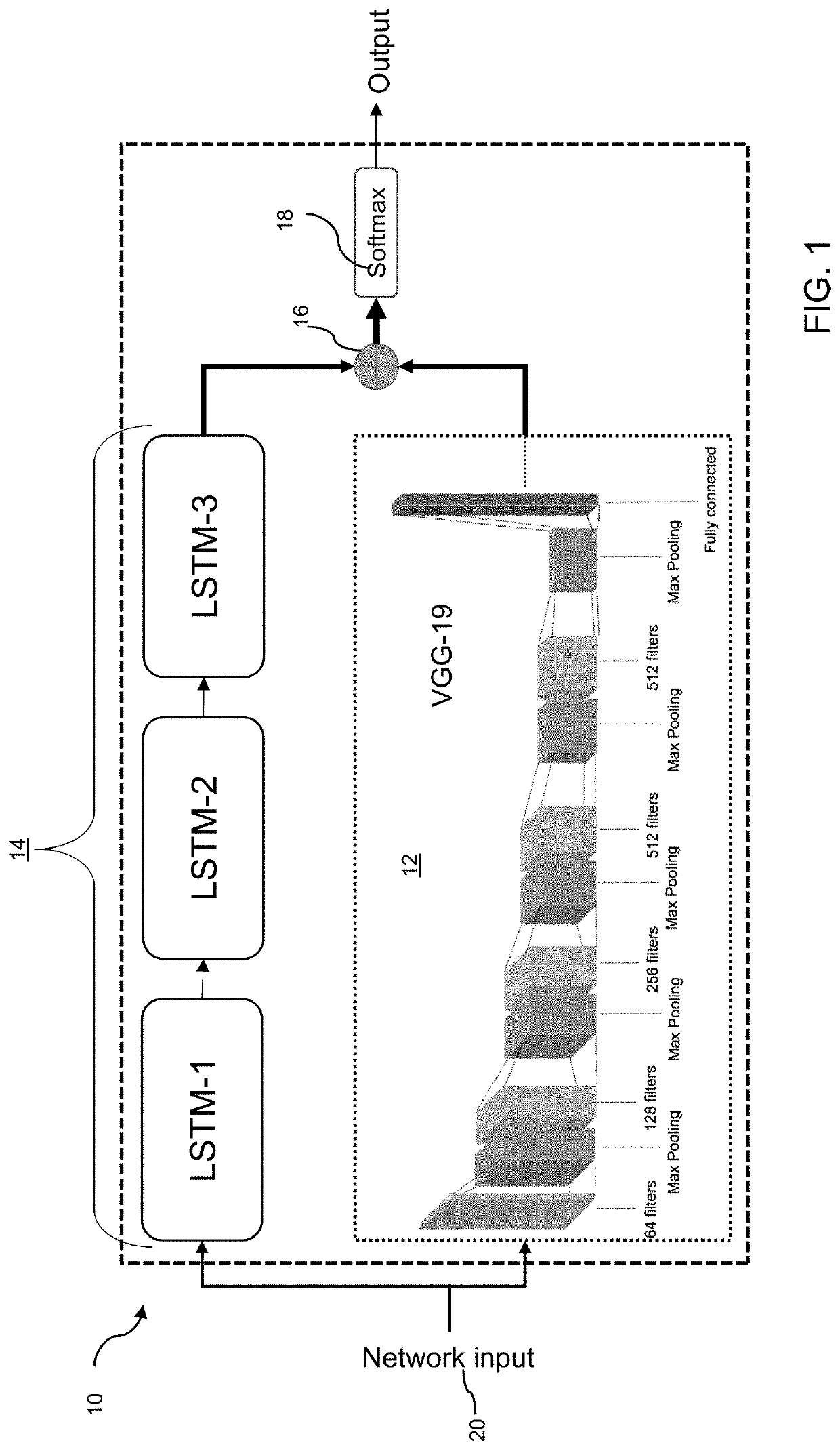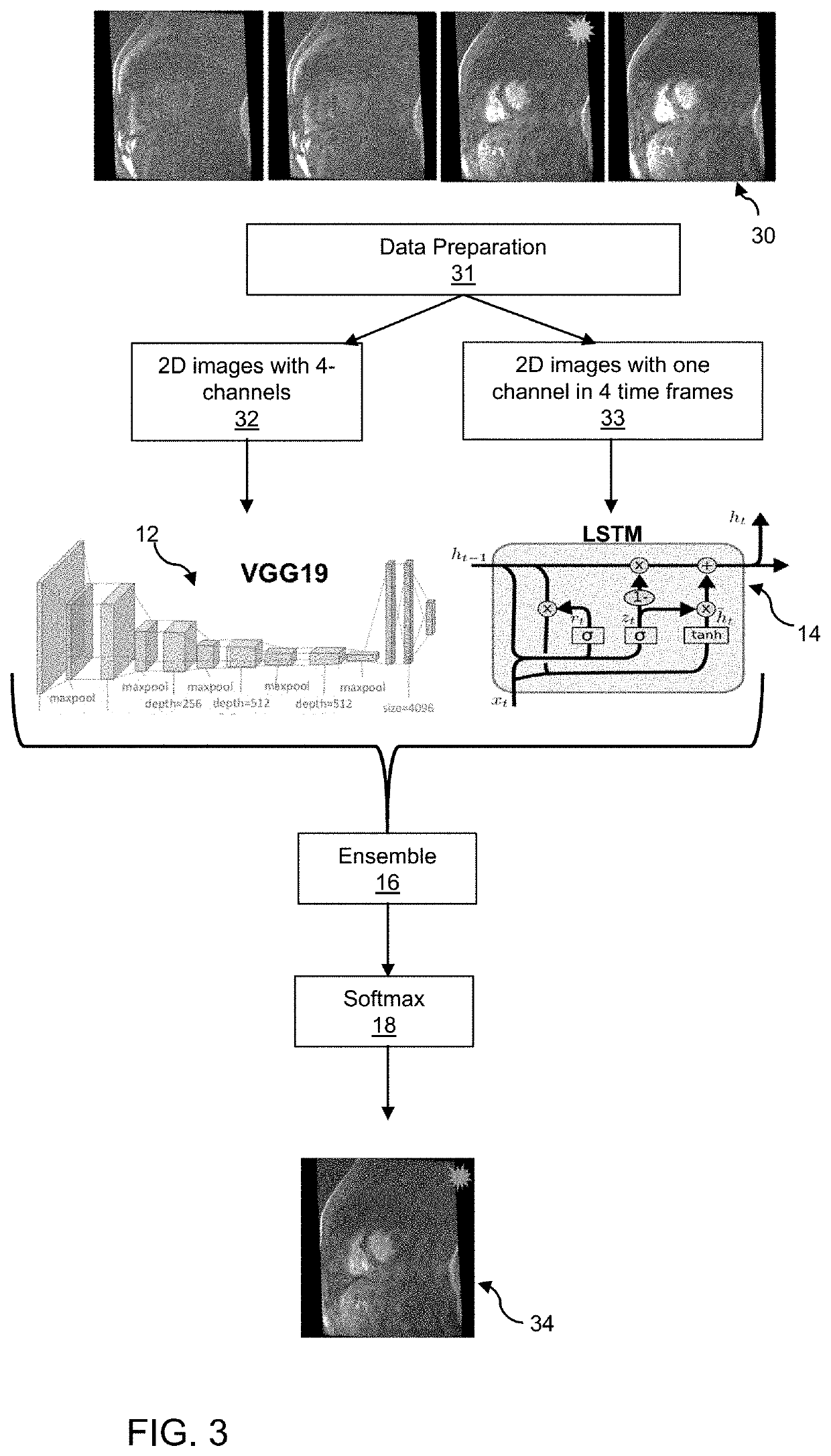Automated selection of an optimal image from a series of images
a technology of automatic selection and image, applied in image enhancement, instruments, biological models, etc., can solve problems such as unbalanced classification problems and problems not well suited to machine learning, and achieve the effect of improving reliability and repeatability
- Summary
- Abstract
- Description
- Claims
- Application Information
AI Technical Summary
Benefits of technology
Problems solved by technology
Method used
Image
Examples
example 2
of Mitral Valve Slice
[0065]With HIPAA compliance and IRB approval, we retrospectively collected 482 cardiac MRI studies performed on a 1.5 T MRI scanner between February 2012 to June 2017. Within these studies there were 892 long-axis (LAX) cine SSFP series (including 257 4-chamber, 207 3-chamber, 197 2-chamber, and 231 other long-axis views) and 493 short-axis (SAX) cine SSFP series. Of these studies, 303 (62.86%) were male and 179 (37.14%) were female patients, with an age range from 12 to 90. A typical imaging protocol is shown in FIG. 9. Images are sequentially acquired. From an initial vertical long axis, a short axis stack is prescribed. From the short axis stack, the 4-chamber, 3-chamber and 2-chamber long axis views are prescribed.
[0066]A radiology resident was trained to identify and annotate cardiac landmarks on each MRI series. A board certified radiologist gave final approval of all ground truth annotations. LAX images were annotated for mitral valve (MV) and apex, while...
PUM
 Login to View More
Login to View More Abstract
Description
Claims
Application Information
 Login to View More
Login to View More - R&D
- Intellectual Property
- Life Sciences
- Materials
- Tech Scout
- Unparalleled Data Quality
- Higher Quality Content
- 60% Fewer Hallucinations
Browse by: Latest US Patents, China's latest patents, Technical Efficacy Thesaurus, Application Domain, Technology Topic, Popular Technical Reports.
© 2025 PatSnap. All rights reserved.Legal|Privacy policy|Modern Slavery Act Transparency Statement|Sitemap|About US| Contact US: help@patsnap.com



